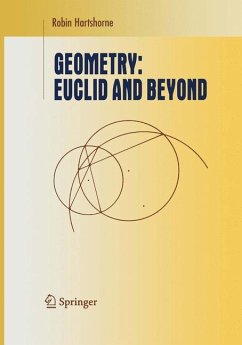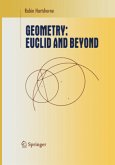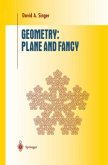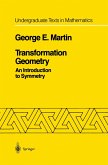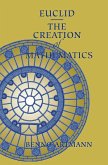This book offers a unique opportunity to understand the essence of one of the great thinkers of western civilization. A guided reading of Euclid's "Elements" leads to a critical discussion and rigorous modern treatment of Euclid's geometry and its more recent descendants. Also included are complete proofs, introduction of coordinates, the theory of area, geometrical constructions and finite field extensions, history of the parallel postulate, the various non-Euclidean geometries, and the regular and semi-regular polyhedra. The text is intended for junior-senior level mathematics majors. Robin Hartshorne is a professor of mathematics at the University of California, Berkeley, and is the author of "Foundations of Projective Geometry" (Benjamin, 1967) and "Algebraic Geometry" (Springer, 1977).
In recent years, I have been teaching a junior-senior-level course on the classi cal geometries. This book has grown out of that teaching experience. I assume only high-school geometry and some abstract algebra. The course begins in Chapter 1 with a critical examination of Euclid's Elements. Students are expected to read concurrently Books I-IV of Euclid's text, which must be obtained sepa rately. The remainder of the book is an exploration of questions that arise natu rally from this reading, together with their modern answers. To shore up the foundations we use Hilbert's axioms. The Cartesian plane over a field provides an analytic model of the theory, and conversely, we see that one can introduce coordinates into an abstract geometry. The theory of area is analyzed by cutting figures into triangles. The algebra of field extensions provides a method for deciding which geometrical constructions are possible. The investigation of the parallel postulate leads to the various non-Euclidean geometries. And in the last chapter we provide what is missing from Euclid's treatment of the five Platonic solids in Book XIII of the Elements. For a one-semester course such as I teach, Chapters 1 and 2 form the core material, which takes six to eight weeks.
In recent years, I have been teaching a junior-senior-level course on the classi cal geometries. This book has grown out of that teaching experience. I assume only high-school geometry and some abstract algebra. The course begins in Chapter 1 with a critical examination of Euclid's Elements. Students are expected to read concurrently Books I-IV of Euclid's text, which must be obtained sepa rately. The remainder of the book is an exploration of questions that arise natu rally from this reading, together with their modern answers. To shore up the foundations we use Hilbert's axioms. The Cartesian plane over a field provides an analytic model of the theory, and conversely, we see that one can introduce coordinates into an abstract geometry. The theory of area is analyzed by cutting figures into triangles. The algebra of field extensions provides a method for deciding which geometrical constructions are possible. The investigation of the parallel postulate leads to the various non-Euclidean geometries. And in the last chapter we provide what is missing from Euclid's treatment of the five Platonic solids in Book XIII of the Elements. For a one-semester course such as I teach, Chapters 1 and 2 form the core material, which takes six to eight weeks.

